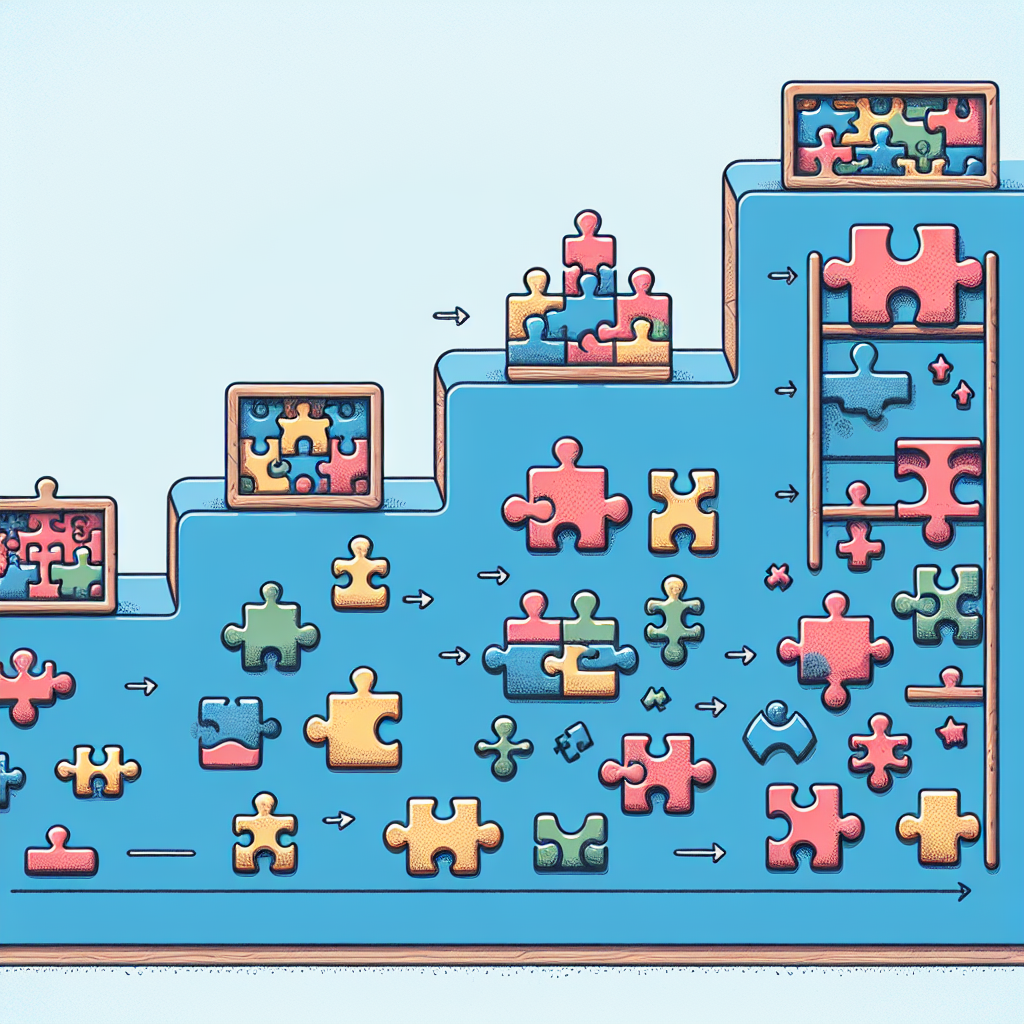Child Development: A Complete Guide to the Essential Stages
Introduction
Which Puzzle Model Is Appropriate for Your Child's Age? This question may seem simple at first glance, but choosing an appropriate puzzle for your child involves a thorough understanding of the various stages of development that your child goes through. Puzzles are not just a recreational activity, they are a vital tool in a child's cognitive, motor and emotional development. Therefore, it is essential to choose the type of puzzle that suits your child's needs and abilities according to their age.
Motor Development
One of the first stages of children's development is the motor stage, which involves coordinating movements and skills such as grasping or pushing objects. Puzzles with large and thick pieces are perfect for young children, for example, in the age range of 1-2 years. The large pieces are easy for their little hands to handle and help them develop their dexterity. An excellent option are wooden puzzles with buttons, which facilitate the process of catching and placing the pieces.
Language development
As your child grows and their motor development is at an advanced stage, it becomes important that they start learning and using language. A themed puzzle, with animals or vehicles, helps develop language by associating words with the images represented. In addition, the discussions that occur while the child works on the puzzle stimulate him to talk and expand his vocabulary.
Puzzles for Cognitive Development
From the age of 3, the child begins to understand more complex concepts and develop his memory and logical thinking. Multi-piece puzzles and even special-shaped puzzles are ideal for this stage. The aim is to challenge the child to think logically and use their memory to remember shapes and positions. Puzzles with maps, alphabets or numbers also contribute to cognitive development and provide educational opportunities.
Emotional and Social Development
Working on a puzzle isn't just about individual development. For older children, over 4 years old, puzzles can be a means of learning about patience and managing frustrations. They can also be a group activity that encourages collaboration and social skills. Complex, multi-piece or 3D puzzles are suitable for this stage and for teamwork.
Puzzle Patterns by Age
- For 1-2 year olds, choose puzzles with 3-5 large, thick pieces.
- At 2-3 years, wooden puzzles with buttons or puzzles with animals and simple shapes, between 5 and 20 pieces.
- Between 3 and 4 years, more complex puzzles with up to 30 pieces, which may also include letter or number puzzles.
- For ages 4-5, puzzles with up to 50 pieces and 3D puzzles with a focus on story and adventure.
- Children over 5 years old can progress to 50+ piece puzzles with various themes and even expert puzzles that require a higher degree of concentration and advanced skills.
Involvement of Parents in Choosing Puzzles
As a parent, you are your child's guide to the world of learning and entertainment. It's important to monitor your child's progress and choose puzzles that match their developmental stage but also challenge them to learn more. Get involved with your child in the puzzle-solving activity and be there to support and encourage them.
Conclusion
Choosing the right puzzle model for your child's age is an important step in supporting their development from home to school and beyond. By knowing the stages of development and by being actively involved in the choice of puzzles, you will help ensure a solid foundation for your child's cognitive, motor, emotional and social development. Remember that puzzles are more than just a toy; they are learning tools that can bring joy and satisfaction to both the child and you as a parent.














































































































































